
Roots
To journey with textured hair is to trace a living lineage, a vibrant, resilient thread connecting us not just to biology, but to generations who understood hair as a sacred canvas, a chronicle, a compass. When we ask how textured hair represents cultural pride today, we are not simply contemplating a contemporary phenomenon. We are engaging with a deep, pulsating inheritance, a heritage that whispers through every coil and curl, recalling ancient practices, stories, and expressions of self. It is a story written on the very helix of our being, a story of strength and radiant identity that transcends time.

The Hair’s Intrinsic Wisdom
Consider the biology of textured hair, not as a mere collection of strands, but as a masterpiece of natural engineering, finely tuned to adapt and protect. The elliptical or flat shape of the hair follicle, characteristic of many Black and mixed-race hair types, contributes to its unique coiling and bending patterns. This morphology results in strands that, while sometimes perceived as fragile, hold remarkable structural integrity.
The inner architecture of each hair, the cortex, varies in density and cell distribution, influencing its elasticity and resilience. This biological blueprint, passed down through ancestors, allowed hair to offer insulation and protection against harsh sun and various climates, serving a functional purpose long before aesthetic values were imposed or altered.
Indeed, the very way textured hair grows, often spiraling from the scalp, creates natural volume and presence. This inherent structure allowed for styles that were both protective and highly symbolic in pre-colonial African societies. Our hair, in its natural state, echoes the ingenuity of human adaptation to diverse environments across millennia.
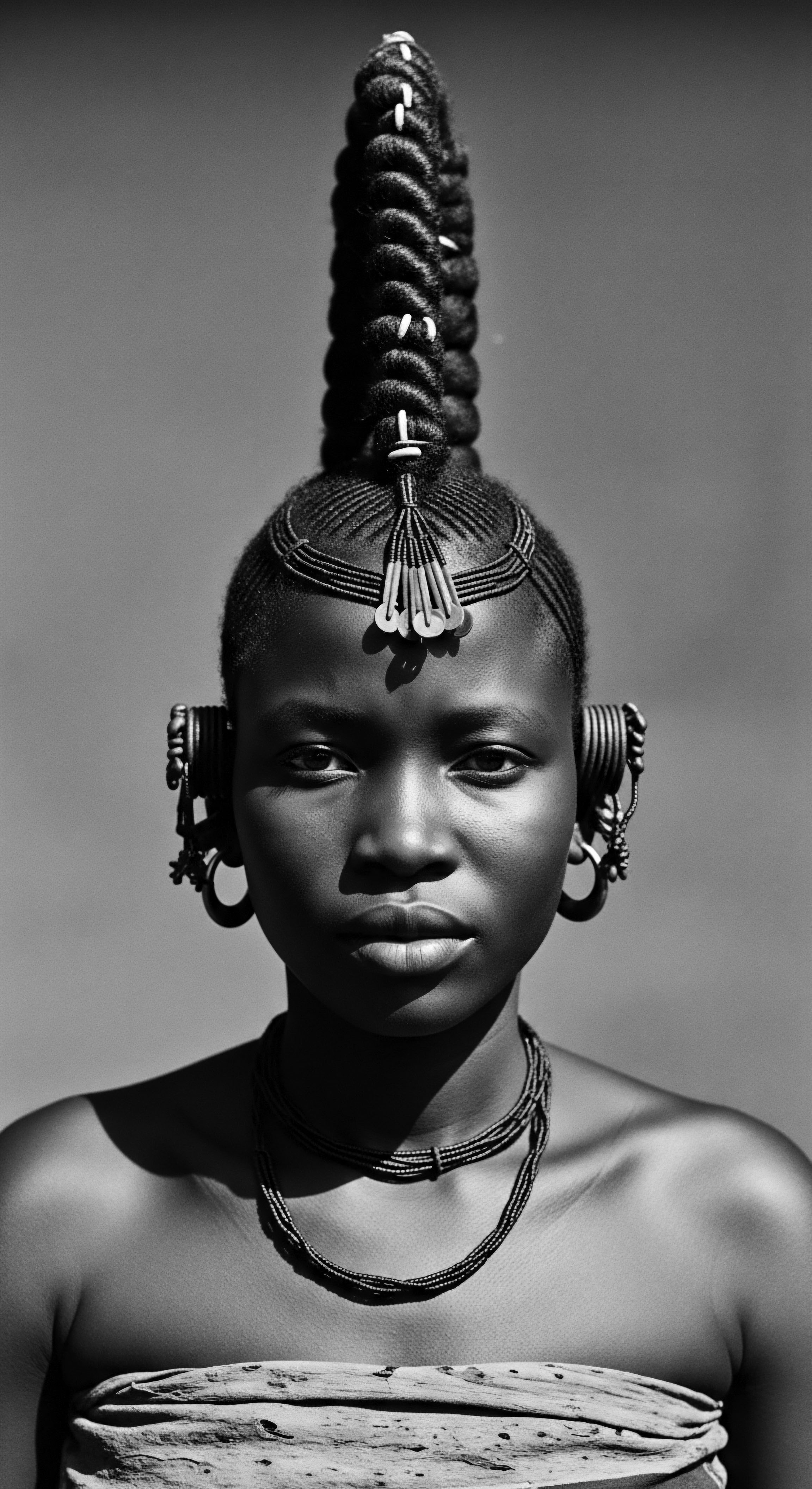
Ancestral Classifications and Meanings
Long before modern classification systems, ancestral communities possessed their own nuanced understanding of hair types and their meanings. In pre-colonial Africa, hair was a profound marker, communicating social status, age, marital status, and even tribal affiliation. Hair groomers held a significant role, their skills upholding community standards and cultural expression. For instance, among many West African groups, intricate braid patterns served as a visual language, each design carrying specific meaning, denoting wealth, marital status, power, or religious affiliation.
Textured hair, from antiquity, has carried profound layers of meaning, serving as a complex communicator of identity, status, and spiritual connection within ancestral communities.
The Akan people of Ghana, for example, recognized particular locked styles as symbols of higher power, reserved for priests. This historical context reveals that the appreciation for textured hair’s varied forms is not a new concept, but a reawakening of an understanding deeply embedded in many ancestral worldviews.

A Legacy of Nomenclature
The language we use to describe textured hair today, while sometimes influenced by contemporary trends, finds its deeper roots in this ancestral wisdom. Terms like “kinky,” “coily,” and “nappy,” though sometimes weaponized in later periods of oppression, originally referred to the beautiful, natural textures unique to African hair. Understanding this lexicon through a heritage lens helps reclaim these words, transforming them from terms of derision into descriptors of inherent beauty and ancestral lineage. The way we speak about hair shapes our perception, and grounding our words in a respectful, historically informed context reclaims a vital part of heritage.
| Cultural Indicator Social Status |
| Hair Manifestation Elaborate, complex styles for chiefs, warriors, and elders. |
| Cultural Indicator Age and Gender |
| Hair Manifestation Specific styles designating rites of passage from childhood to adulthood; unique styles for men versus women. |
| Cultural Indicator Tribal Identity |
| Hair Manifestation Distinct patterns and adornments identifying ethnic group affiliation. |
| Cultural Indicator Spiritual Beliefs |
| Hair Manifestation Styles linked to ceremonies, believed to hold protective properties or communicate with ancestors. |
| Cultural Indicator This table illustrates how textured hair served as a living document of personal and communal history across various pre-colonial African societies. |
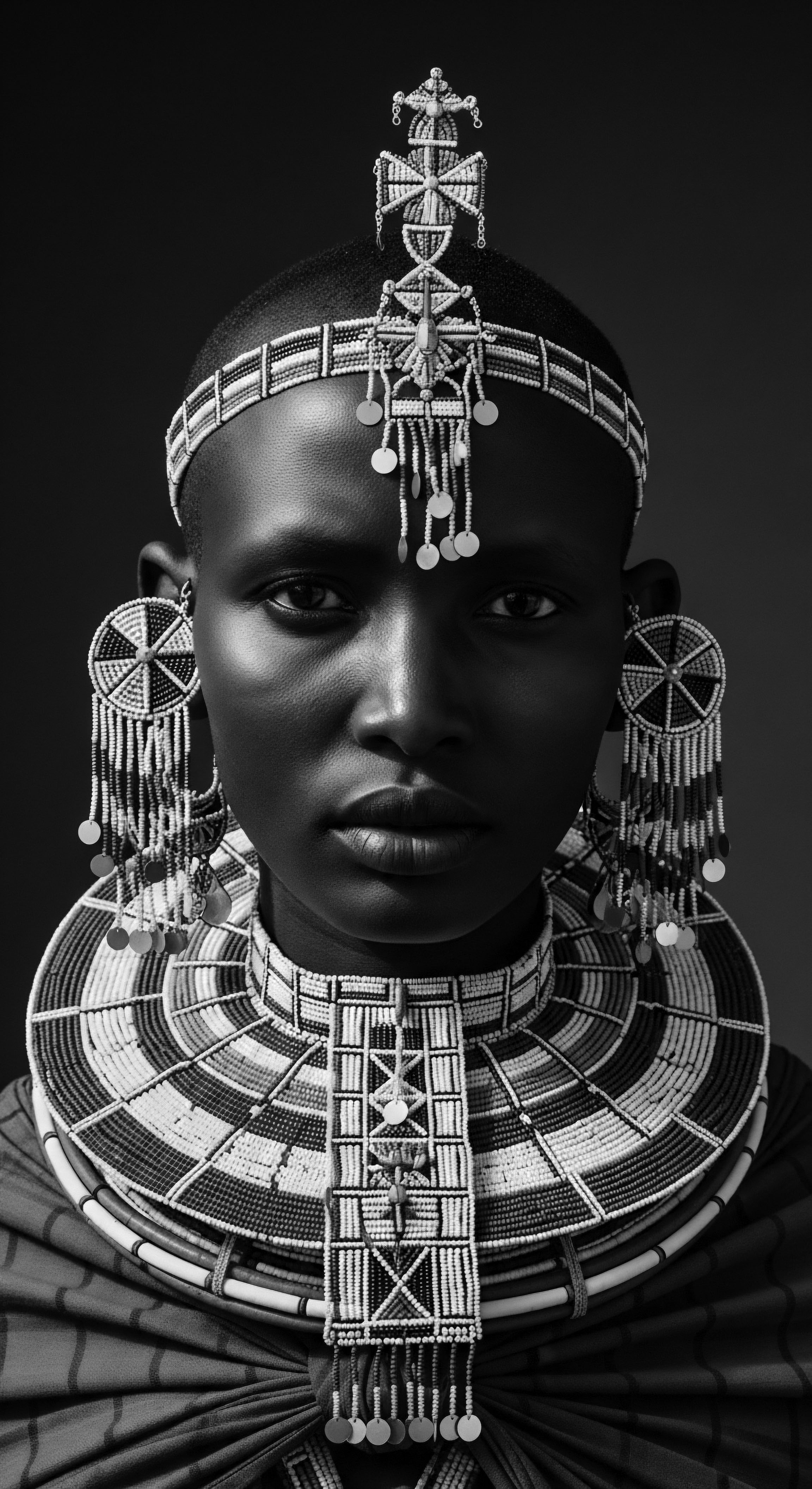
Ritual
The very act of styling textured hair transcends mere aesthetics; it embodies a living ritual, a dialogue between ancient ways and present-day expression. From the intricate cornrows that trace the contours of the scalp to the free-flowing coils, each style carries the echo of hands that have shaped hair for millennia. This pillar examines how these enduring practices, passed down through generations, continue to sculpt identity and solidify cultural pride today.
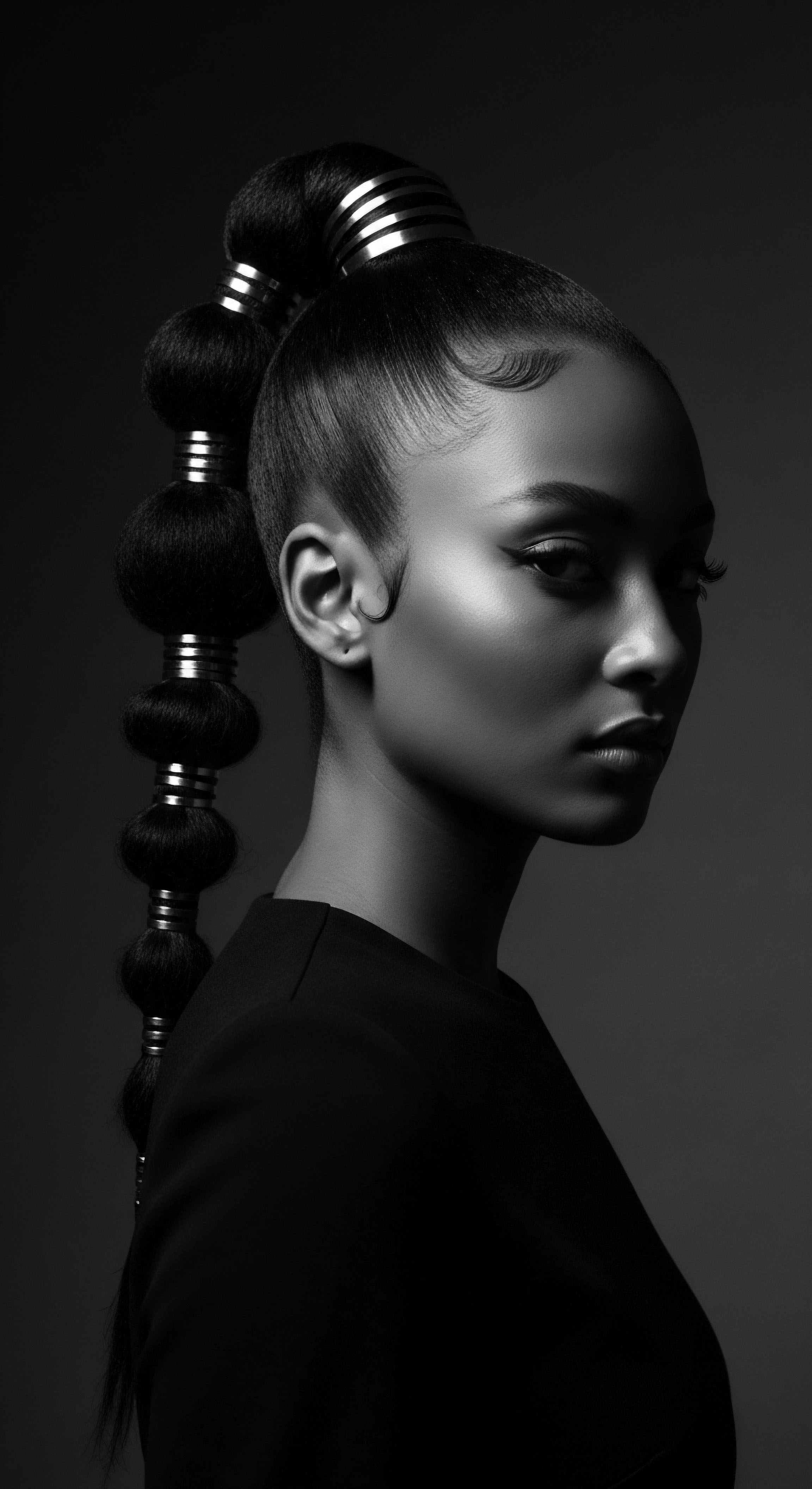
Protective Styling Ancestry
Protective styles, a cornerstone of textured hair care, possess a rich and enduring heritage. Long before their contemporary popularity, styles like braids, twists, and locs served as practical and symbolic expressions in African societies. They shielded hair from environmental elements, promoted growth by reducing manipulation, and preserved moisture. More profoundly, these styles often carried deeper societal meanings.
Braiding, for instance, dates back as far as 3500 BC, with communities like the Himba people in Namibia utilizing braid patterns to convey a woman’s tribe, age, wealth, religion, and marital status. This communal practice often involved older generations teaching younger ones, fostering intergenerational bonds through shared skill and story.
During the transatlantic slave trade, when many African people were forcibly stripped of their cultural expressions, including traditional hairstyles, braiding became a quiet yet powerful form of resistance. Enslaved women used intricate braid patterns to map escape routes or hide grains for survival, transforming hair into a tool of endurance and communication. This speaks volumes about the intrinsic value and resilience woven into textured hair practices, even in the face of immense oppression.
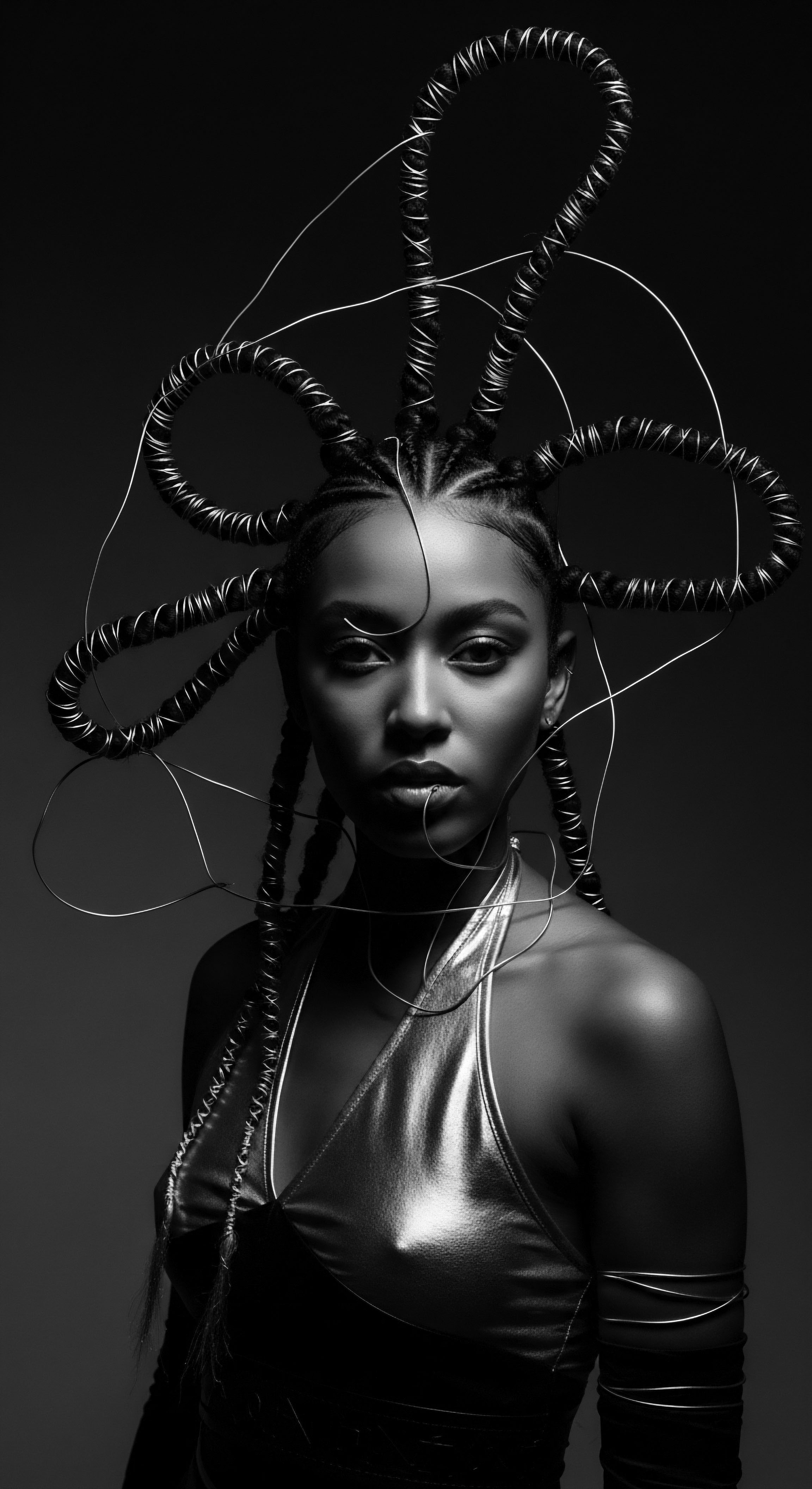
What Ancient Styling Techniques Remain Relevant?
Many traditional techniques continue to inform modern styling. The foundational concept of segmenting hair, twisting, and braiding remains a core element. Consider Bantu Knots, originating from the Zulu people of South Africa, symbolizing strength and unity.
These neat, coiled sections, while now a fashion statement, once held significant communal meaning, tracing back to the Bantu-speaking communities of the 2nd millennium BC. Similarly, the practice of oiling and moisturizing hair, often with indigenous ingredients, has continued through centuries.
- Shea Butter ❉ Extracted from the nuts of the Shea tree, this butter has been used for centuries across Africa for its moisturizing and protective properties for both skin and hair, facilitating braiding.
- Chebe Powder ❉ An ancestral hair paste ritual from Chad, utilizing roasted and crushed seeds of the Chebe tree, along with cherry seeds and cloves, historically used to promote longer, more lustrous hair.
- Aloe Vera ❉ Known as “Nature’s First Aid Plant,” its gel has been valued for healing and enhancing skin and hair in African beauty rituals.
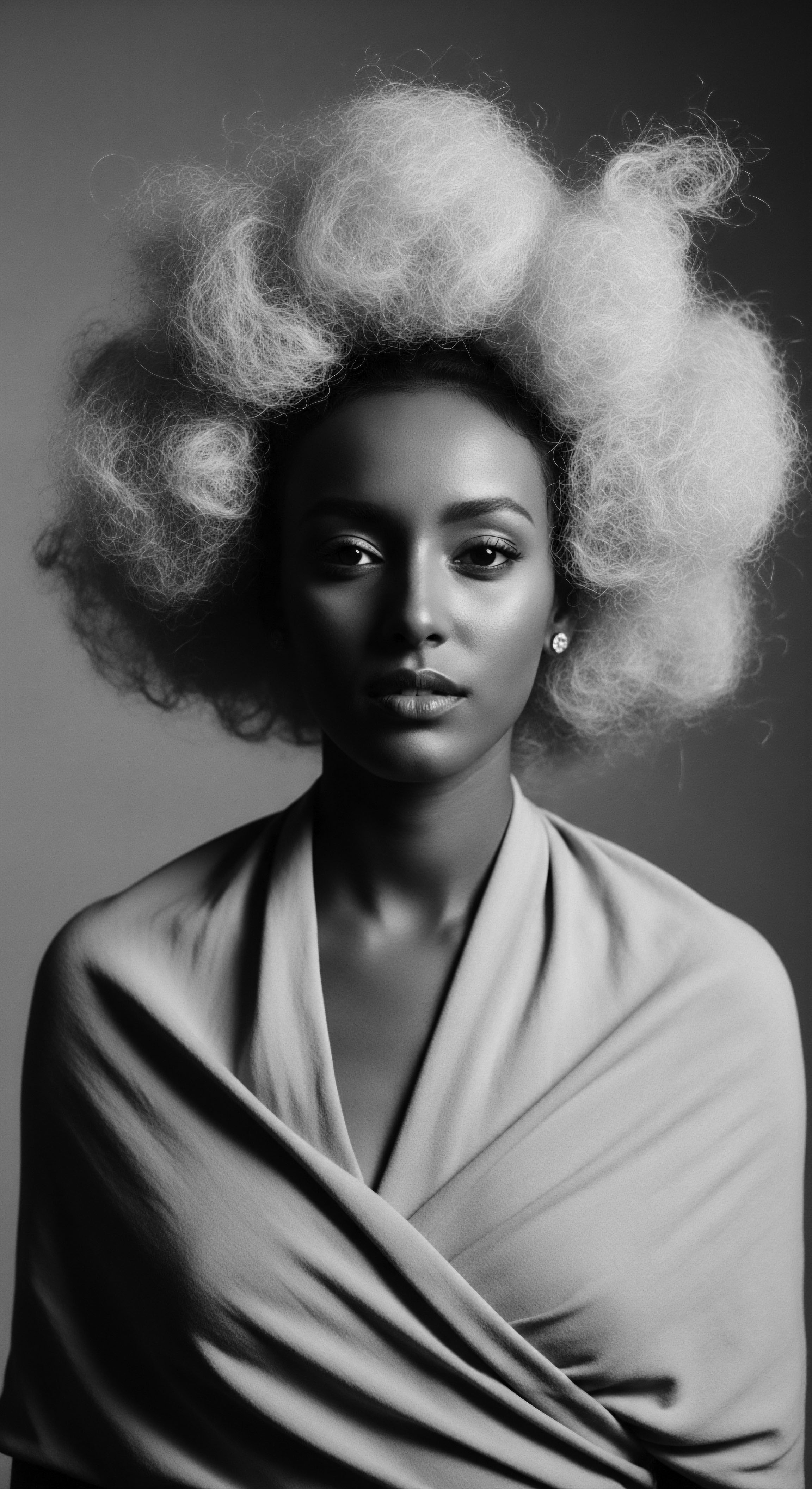
The Transformation of Identity
The act of styling textured hair also signifies transformation, both personal and collective. In the mid-20th century, the Civil Rights Movement brought a profound shift, with natural styles like the Afro becoming a potent symbol of Black pride, activism, and a rejection of Eurocentric beauty standards. This historical moment, often termed the “Black Is Beautiful” movement, empowered individuals to embrace their natural skin, features, and hair, challenging long-held societal norms.
Styling textured hair extends beyond mere appearance, standing as a living testament to ancestral resilience, cultural identity, and conscious self-reclamation.
This embrace continues today, as individuals consciously choose styles that connect them to their heritage and express a sense of autonomy over their appearance. The resurgence of interest in traditional braiding styles and natural hair represents a continuation of this legacy, a powerful visual declaration of belonging and pride.

Relay
The care of textured hair, viewed through a heritage lens, becomes a profound act of self-reverence, a relay of ancestral wisdom passed from generation to generation. It intertwines scientific understanding with traditional practices, problem-solving with holistic wellbeing, creating a regimen of radiant self-connection. How does this conscious approach to care translate into cultural pride today? It manifests as a living continuum, honoring the past while confidently shaping the future.

Building Care Regimens Rooted in Ancestry
Personalized textured hair regimens today often echo the principles understood by our ancestors ❉ gentle cleansing, deep conditioning, and protective styling. Historically, hair care was not merely about cleanliness; it was a social activity, a bonding opportunity among family and friends, spanning hours or even days. This communal aspect reinforced cultural norms and transferred knowledge. Modern understanding of hair porosity, elasticity, and protein-moisture balance finds resonance in traditional practices that intuitively used natural ingredients to achieve similar goals.
For instance, the consistent use of natural oils like Shea Butter, Coconut Oil, and Argan Oil for moisturizing and protecting hair has been a centuries-old practice in Africa. These ingredients, often sourced locally, provided essential nutrients and sealed in moisture, addressing the unique needs of textured strands long before scientific labels were applied.
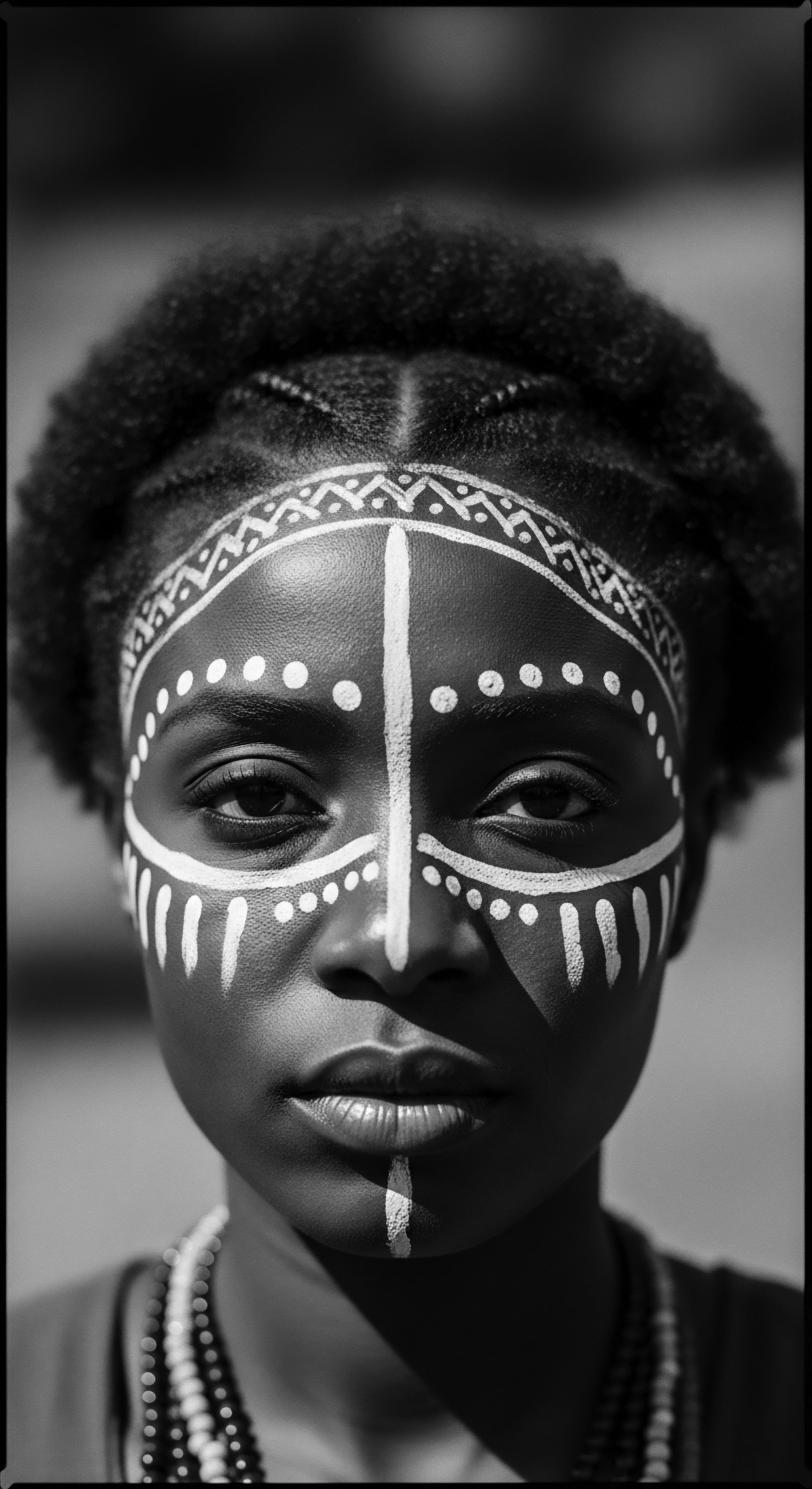
How Do Ancient Rituals Inform Modern Hair Health?
Many ancestral hair rituals, once considered folk remedies, now receive validation through scientific inquiry. The deep conditioning achieved by certain plant-based ingredients or specific techniques can be understood through their molecular interactions with the hair shaft. For example, the use of a traditional hair paste like Chebe from Chad, which boasts cherry seeds and cloves, is said to promote hair length and luster.
Modern science can examine the properties of these botanicals—their anti-inflammatory effects, antioxidant content, or moisturizing capabilities—explaining the efficacy observed through generations of practice. This blending of ancient wisdom and contemporary understanding deepens our appreciation for both.

The Nighttime Sanctuary and Bonnet Wisdom
The nighttime sanctuary for textured hair, often involving bonnets, scarves, or satin pillowcases, is a testament to adaptive care, its roots tracing back to practical solutions for preserving hairstyles and protecting delicate strands. While the modern bonnet may seem a simple accessory, its use is a contemporary manifestation of a long-standing practice of protecting hair at rest. In many African cultures, headwraps and coverings served diverse purposes, indicating age, marital status, and even prosperity.
These coverings also provided practical protection, maintaining elaborate styles that took hours to create, ensuring their longevity and preserving the hair’s condition. The wisdom behind minimizing friction, maintaining moisture, and preventing tangles during sleep is a timeless thread connecting historical necessity with modern care.
The practical application of satin or silk, known for their smooth surfaces, mirrors ancestral ingenuity in using natural fabrics or wraps to shield hair. This simple yet effective ritual underscores a continuous commitment to hair health and presentation, demonstrating a clear link between inherited wisdom and daily habit.

Addressing Challenges with Rooted Solutions
The journey with textured hair has not been without its societal challenges, particularly concerning perceptions of professionalism and beauty standards. Historically, textured hair was often deemed “unprofessional” or “bad hair,” a damaging narrative rooted in the era of slavery and the imposition of Eurocentric ideals. This led to many individuals feeling pressured to alter their hair texture through chemical relaxers or heat styling to assimilate.
The enduring practice of textured hair care, passed down through time, serves as a powerful testament to collective resilience and a profound connection to heritage.
However, the ongoing natural hair movement represents a profound reclamation of identity and pride. Studies indicate that despite persistent biases—for instance, Black women’s hair is 2.5 times more likely to be perceived as unprofessional—there is a growing sense of self-acceptance and confidence among those who wear their hair naturally. Research by Johnson and Bankhead (2014) highlights that Black women who wear their hair naturally often feel better about themselves, challenging the outdated narrative that straight hair is necessary for success. This shift is not just a personal aesthetic choice; it is a collective reaffirmation of heritage, challenging systemic biases, and celebrating the inherent beauty of textured hair.
The CROWN Act legislation in the United States, which aims to prohibit hair discrimination, further underscores the societal acknowledgment of this historical struggle and the ongoing work to protect cultural expression through hair. The continued fight for acceptance of natural hair in professional and educational settings is a direct extension of this pride, a stand for the right to embody one’s full heritage without penalty.

Reflection
To consider textured hair today, and its indelible mark as a representation of cultural pride, is to witness a living, breathing archive. Each curl, every braid, the very spring of a coil, carries the undeniable weight and luminosity of generations. It is a story not confined to textbooks or hushed whispers, but one etched into daily rituals, bold declarations, and quiet moments of self-acceptance. The Soul of a Strand, indeed, holds within it the resilience of those who resisted the erasure of their identity, the ingenuity of those who harnessed nature for sustenance and beauty, and the courage of those who now stand tall, crowned by their ancestry.
This journey from elemental biology to profound societal statement demonstrates an unbroken chain, a heritage continually revitalized by the very act of existing authentically. The future of textured hair, therefore, is not a departure from its past, but a deeper, more vibrant blossoming, an unending reaffirmation of its inherent wisdom and enduring splendor.

References
- Bebrų Kosmetika. (2024). The Power of Hair in African Folklore ❉ Rituals and Traditions .
- Byrd, A. D. & Tharps, L. L. (2014). Hair Story ❉ Untangling the Roots of Black Hair in America. St. Martin’s Press.
- Johnson, T. A. & Bankhead, T. (2014). Hair It Is ❉ Examining the Experiences of Black Women with Natural Hair .
- Lashley, M. (2019). The importance of hair in the identity of Black people. Érudit.
- LOHY. (2023). The Evolution Of The Natural Hair Movement ❉ How The “Curly Girl” Movem .
- Noireônaturel. (2024). African braids ❉ a timeless heritage of beauty and cultural significance .
- Refinery29. (2021). The Evolution Of The Natural Hair Movement .
- Scholar Commons. (n.d.). African American Hair and Beauty ❉ Examining Afrocentricity and Identity Through the Reemergence and Expression of Natural Hair i .
- The Braid Gallery. (2025). The Legacy of Braids ❉ Black History Through the Art of Hair .
- The Edison Light. (n.d.). History of Braids in the Black Community .
- Uptown Curl. (2024). The Natural Hair Movement .
- Wikipedia. (n.d.). Natural hair movement .
- YorkSpace. (2021). Braided Archives ❉ Black hair as a site of diasporic transindividuation .
